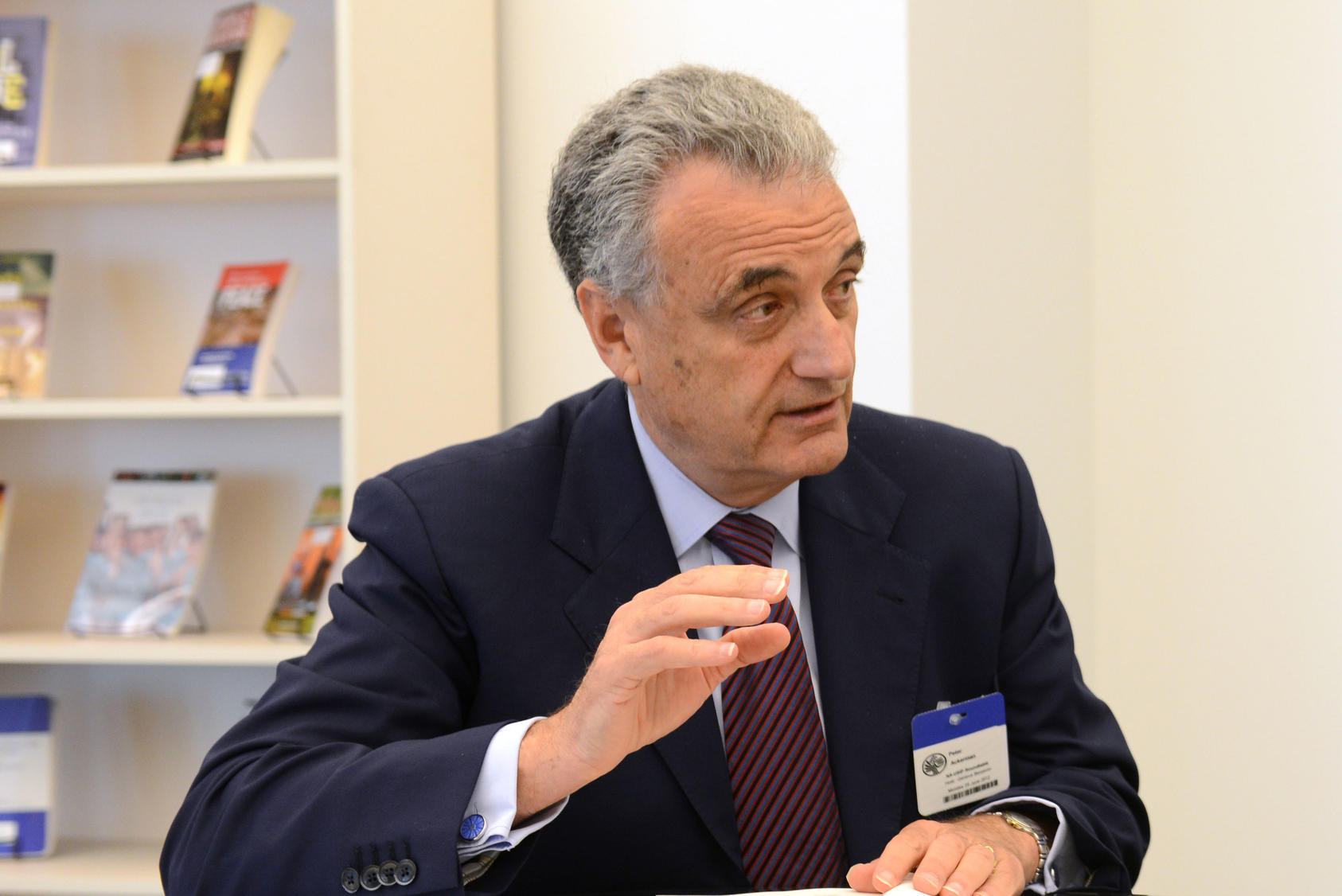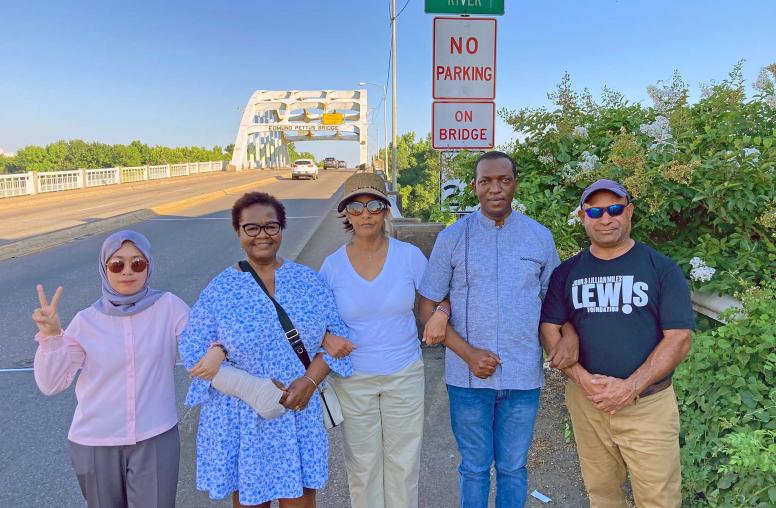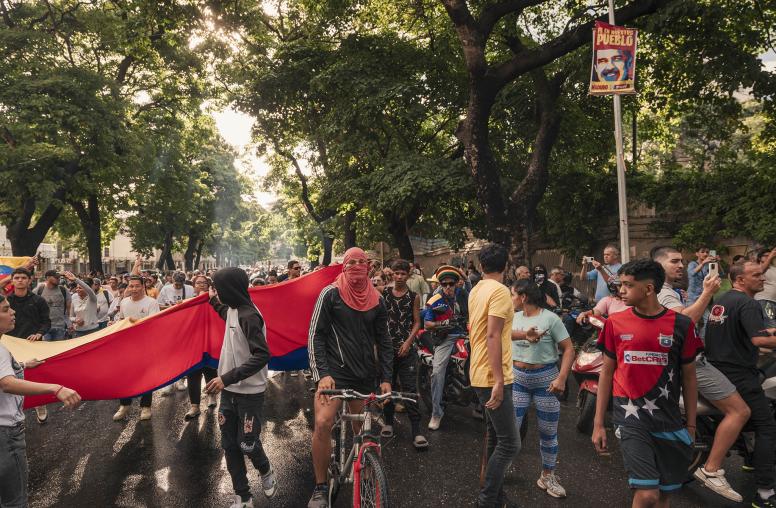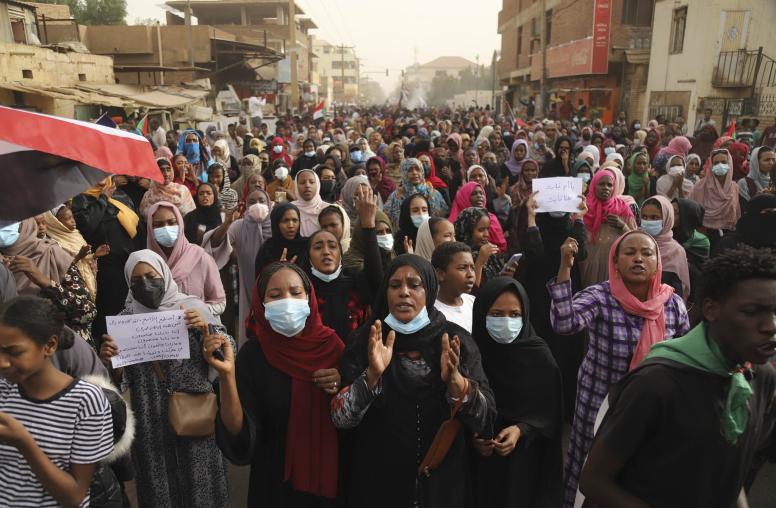Recent years of declining democracy and rising authoritarianism and violent conflict form what President Biden and others call the “defining challenge of our time.” Biden, like millions of people, see nonviolent struggles for freedom, such as those led by the Mahatma Gandhi and Dr. Martin Luther King, Jr., as humanity’s best way to meet this challenge. Last week, though few may have realized it, the world lost a man who, over the last 50 years, helped us to understand and act on that insight: Dr. Peter Ackerman.

Peter had a long, successful career in finance and business. Yet he was not content to live comfortably on the fruits of that success. Instead, he devoted his considerable talents and resources to causes for which he was passionate—in particular, the practice of nonviolent action to build democracy and peace. He co-founded the Albert Einstein Institution, a research center on nonviolence, and later the International Center on Nonviolent Conflict. He co-chaired USIP’s own International Advisory Council. His visionary writing and research ranged from scholarly treatises, such as Strategic Nonviolent Conflict, to an acclaimed popular history book and documentary, A Force More Powerful.
Peter was also a friend and mentor. His work long influenced me as a scholar. In recent years, that indirect intellectual mentorship grew into a personal relationship, as we spoke occasionally about nonviolent action research and he shared the ambitious vision of his final book: The Checklist to End Tyranny.
Peter was a person of deep moral and practical vision. He drew on the many threads of his complicated life to weave a compelling worldview. I didn’t always agree with him, but every conversation left me with much to reflect on. Since Peter died on April 26, I’ve returned to those reflections. Here are a few things that I will take from his example.
People Can Overcome Repression and Violence
Peter was a deep believer in the ability of ordinary people—even citizens of oppressive political regimes or civilians caught amid civil war or genocide—to win peace and freedom. His work pointed to countless historical examples, such as the fall of communism in Eastern Europe, in which people achieved changes that many had thought impossible.
He was not naïve about the challenges of such struggles. As someone who worked with Chinese student activists after the Chinese government’s massacre of prodemocracy demonstrators at Tiananmen Square, he was well aware of the potential costs of standing up to oppression. Yet he persisted in a deep faith, grounded in rigorous research, that the choices of ordinary yet brave people to stand up in the face of those costs ultimately wins the day.
Social scientists debate how far people can apply their personal abilities and grit to overcome oppressive conditions. In this battle between “skills and conditions,” as Peter put it, research increasingly appears to justify Peter’s faith in the potential of oppressed people. Popular nonviolent uprisings remain difficult to predict, and frequently spring up in countries where the skeptics least expect it. The 2018-2019 revolution in Sudan was a recent example of nonviolent action in the unlikeliest of circumstances that Peter championed. He chose the iconic image of Sudanese activist Alaa Salah, leading chants to demand democracy from the top of a car, for the cover of his final book.
We Build Democracy Through Nonviolent Action
Peter’s groundbreaking 2005 study, How Freedom is Won, written with Adrian Karatnycky, turned academic literature on democracy on its head. Past scholars had argued that democracy mostly came about through bargains among political elites. How Freedom is Won showed the exact opposite. Political transitions initiated through bottom-up nonviolent action were much more likely to lead to democracy. For me, as for many scholars and pro-democracy activists, this was a powerful insight.
This finding has inspired abundant replication. A recent comprehensive study of dozens of potential determinants of democracy found that nonviolent action campaigns are one of the most robust predictors of democratization that exist.
As a graduate student, watching the tragic aftermath of many of the transitions of the 2011 “Arab Spring” I had questions about this relationship between nonviolent action and democracy. Why, if Peter and others were right, were so many moments of nonviolent action followed by returns to dictatorship? Peter supported my research to answer that question, resulting in my book From Dissent to Democracy. My work confirmed the relationship between nonviolent action and democracy, but added points of nuance. It isn’t enough to merely initiate change through nonviolent action; that action must continue to hold new leaders accountable through political transitions, and must shift toward goals that build up democratic institutions.
Since the book’s release, Peter and I often discussed this connection between nonviolent action and democracy, in particular the relevance of nonviolent action in an era of democratic backsliding. Despite growing skepticism from policy and academic circles, Peter remained convinced, as I am, that nonviolent action provides the best possible chance to reinvigorate global democracy.
Rigorous Research Can Change the World
Peter understood that to wage effective nonviolent action requires research to better understand it. He saw that, while the study of war is vast and ancient, the world had paid little scholarly attention to nonviolent action. So through his own work and support for others, Peter built the evidence for nonviolent action, often from scratch. The International Center on Nonviolent Conflict’s impressive resource library has hundreds of examples of this life-long effort.
Perhaps the most impactful among the many research projects Peter supported was Erica Chenoweth and Maria Stephan’s Why Civil Resistance Works. This book, the first of its kind, showed through a global statistical study what Peter had long been claiming: that nonviolent action was not just admirable but effective, not just sympathetic but strategic.
Since its publication in 2011, Why Civil Resistance Works has restructured the conversation about how political change happens. What made it powerful was not just that it was presented effectively, but that the research beneath it was methodical and rigorous, conducted with deep care by two dedicated social scientists.
Follow Activists’ Lead
Peter commanded attention at the highest levels of global policymaking. He could speak with authority on an impressive range of historical and contemporary nonviolent action struggles. He cared deeply about sharing this knowledge with activists. Yet he remained committed to the principle of following activists’ lead in how they waged their own struggles.
Under Peter’s leadership, the International Center on Nonviolent Conflict refused to provide specific advice to activists, a policy that arose out of Peter’s commitment to deferring to their experiences. The center gave training and resources, and built transnational connections among activists from countries around the world to share ideas, but always recognized that the most profound insights in how to effectively wage nonviolent action would come from the people waging it.
This faith in activists’ insights was evident in Peter’s great final project: The Checklist to End Tyranny. Peter framed this slim book as a centerpiece of his legacy. The book’s core is a training exercise, inspired by Peter’s experiences in business and activist training, and built around a simple checklist. It provides a framework for analyzing a nonviolent conflict based on the best global research but defers to local knowledge in determining how and where that framework applies.
Peter envisioned this checklist spreading through activist communities worldwide, with activists joining their knowledge of their own contexts with academic insights about the mechanisms of nonviolent action to strategize about how to best bring about positive change. He worked tirelessly in his final months to realize that vision. Until mere hours before he died, Peter was strategizing about how to use nonviolent action to bring about a new wave of global democratization.
In a time of such great global challenges, that new wave feels very distant. I feel deeply the Ioss of Peter’s wisdom, tireless advocacy, and compelling vision of a free, just, peaceful world. Still, Peter brought us closer to that vision through an ultimately incalculable global legacy. When I look at the countless activists strengthened through training he inspired, and the scholars who are building on foundations that he laid, I will remember him with gratitude, and feel energized to continue to bring that vision to reality.


